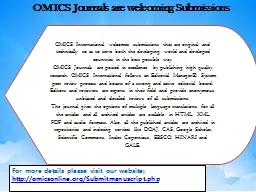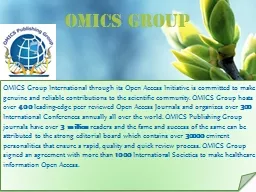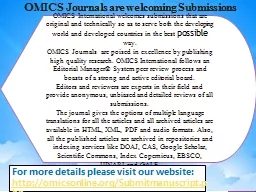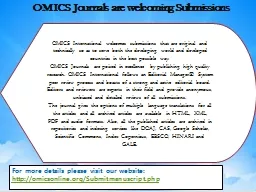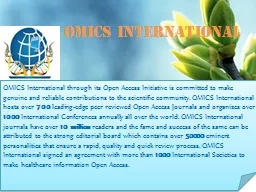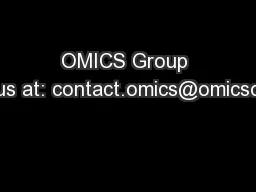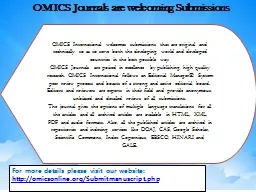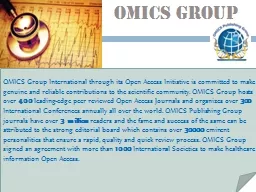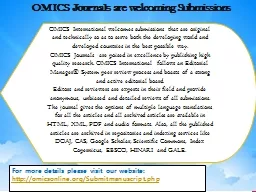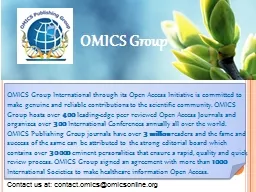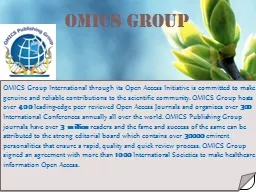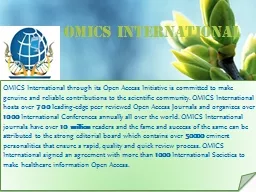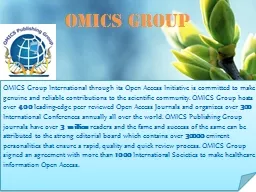PPT-OMICS International welcomes submissions that are original and technically so as to
Author : lois-ondreau | Published Date : 2019-01-22
OMICS Journals are poised in excellence by publishing high quality research OMICS International follows an Editorial Manager System peer review process and boasts
Presentation Embed Code
Download Presentation
Download Presentation The PPT/PDF document "OMICS International welcomes submissio..." is the property of its rightful owner. Permission is granted to download and print the materials on this website for personal, non-commercial use only, and to display it on your personal computer provided you do not modify the materials and that you retain all copyright notices contained in the materials. By downloading content from our website, you accept the terms of this agreement.
OMICS International welcomes submissions that are original and technically so as to: Transcript
Download Rules Of Document
"OMICS International welcomes submissions that are original and technically so as to"The content belongs to its owner. You may download and print it for personal use, without modification, and keep all copyright notices. By downloading, you agree to these terms.
Related Documents

